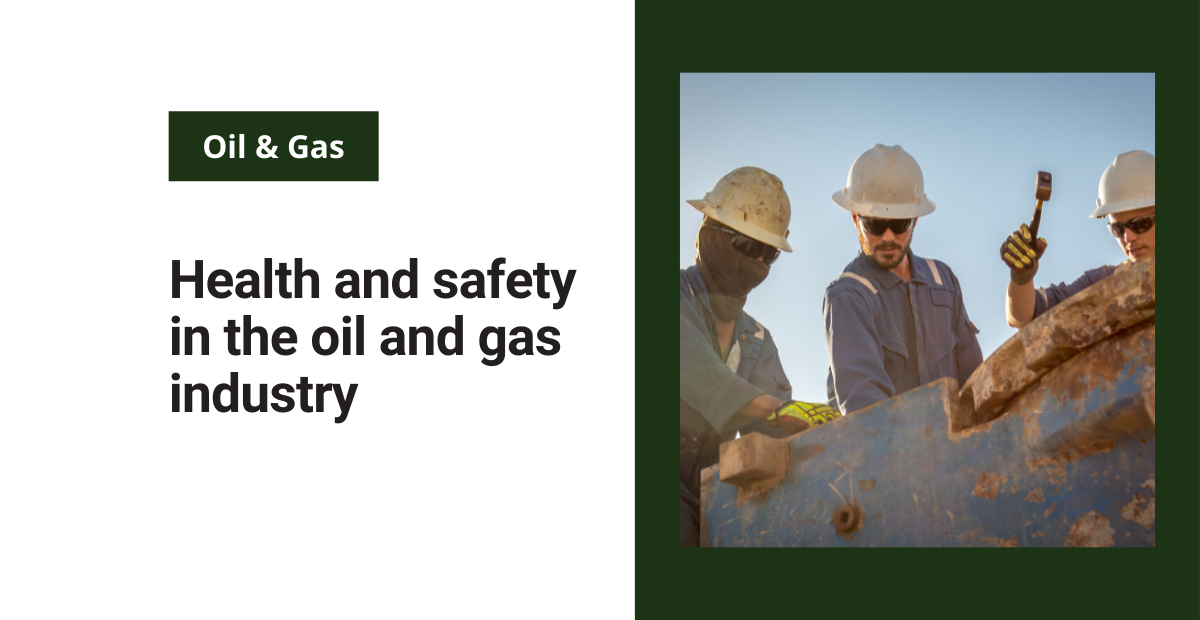The oil and gas industry involves the extraction of hydrocarbons from the subsoil to treat it, generate a commercial product, and finally, distribute it. Ensuring health and safety in the oil and gas industry is essential during each of these processes.
This process has two stages: downstream and upstream. Electronic, mechanical, and hydraulic machines aid in the development of these activities.
In the different operations carried out in the drilling fields, flow stations, refineries, tank farms, and even in the transport sector, workers are always in contact with different toxic and volatile substances. These substances pose serious threats to the health and safety of employees.
Methodologies, regulations, and training helps companies keep personnel as safe as possible and avoid incidents.

Importance of safety management to protect health and safety
The study entitled “Fatalities in the Oil and Gas Extraction Industry (FOG)” conducted by The National Institute for Occupational Safety and Health (NIOSH) shows that by 2017 the number of fatal casualties from problems in the oil and gas industry was 69 in total across the U.S.
This study shows that more than 70% of the incidents occurred in field operations i.e., the downstream sector.
A constant challenge
Despite efforts to train and care, human error is a constant variable in problem activities. For example, there is the well-known case of Deepwater Horizon, which happened in 2010 in April.
The cause behind the accident was human error. It was due to failures in the paperwork and not leaving a record of the processes and tests as dictated by the plant’s safety measures.
Because there was more gas than they could store, an explosion arose, resulting in 11 deaths and 162+ injuries.
The future of health and safety in the oil and gas industry
The efforts made in the industry for safety are not only about training staff. They also focus on the adequacy of the buildings and structures used in different operations to prevent accidents and promote universal safety.
Future safety management challenges focus on preemptive actions to correct potential day-to-day issues. These actions aim to prevent them from leading to serious consequences.
The training of workers in the field is incorporating more and more VR & AR components. This is a trend that will only increase and lead to a better-trained workforce.
Another focus is the need to urge organizations to modernize and automate processes to minimize personnel contact with operational risks. It’s important to give workers the ability to work on any device, in any location, even when offline.
The challenge in safety management for the oil and gas industry is that there are a lot of moving parts to keep track of. By leveraging technology, organizations can simplify the management of safety processes. In turn, this can lower the risk of future incidents.



